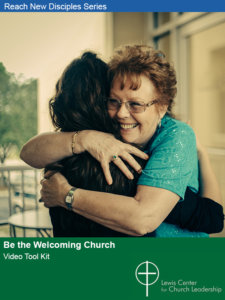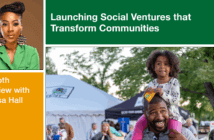Ann Michel of the Lewis Center staff says churches can improve outreach efforts by focusing on people nearby. Those attending activities in your building, family and friends of members, and immediate neighbors already know something about your church. And you know important things about them as well.
Who comes to mind when you think about connecting with new people? This question can be overwhelming because there are just so many people “out there.” And consequently, church efforts to connect, communicate, and invite are often general, diffuse, and ineffective. But what if instead of trying to connect with anybody and everybody, you focused on people already known to you, who also already know something about your church?
Think systematically about the people who are nearby or adjacent to the life of your congregation. Who already has some knowledge of or connection to your church? Who are the people God has placed in your pathway?
Building users
Are there Scout troops, recovery programs, community groups, or childcare programs meeting in your church building? You have some immediate advantages in developing relationships with these constituencies. You know something about their interests and concerns. You know when you are likely to run into them. You have built-in ways of sharing information. In some cases, you may know their names and addresses. So, it’s more natural to connect with these groups than with random people in your community.
- Let them know you value their presence. My children attended an after-school program at a neighborhood church which wasn’t the church we attended on Sundays. At the start of each school year, we received a lovely letter from the pastor letting us know they considered our family part of their extended church family and inviting us to attend worship or call on the pastors with any needs. It was welcoming and nonintrusive. This type of communication is also an opportunity to share information about age-specific programing, such as parenting classes or children’s activities.
- Offer special hospitality. You might have a team of greeters providing coffee and donuts weekly or monthly as people come and go from daycare or other programs. Perhaps you could supply cookies or special refreshments every so often for recovery groups or community groups meeting in your space. Your pastor might drop in with a word of welcome around the Christmas holidays or at the beginning of the fall program year. The goals are to be a welcoming presence and to build relationships.
- Let your building speak. Those visiting your building regularly will learn about your church by what they see as they come and go — yard signs and banners, bulletin boards, information displays. Are these lively, up to date, and designed to connect with someone not yet part of your church? If a community choir practices in your social hall, make sure to have information about your music ministry and special concerts where they can’t help but find it. Place Vacation Bible School flyers where after-school families will see them.
- Create special events to reach building users. If you observe Scouting Sunday, make sure every family in the troop gets a personal invitation. Plan a special worship service to recognize the teachers in your preschool or celebrate the end of the school year. Host parenting seminars, financial literacy trainings, recovery workshops, special musical performances — whatever might be an appropriate opportunity to extend a personal invitation to groups and individuals already in your orbit.
Families and friends
Another nearby constituency is friends and families of members. Again, they already know something about your church, and you may know something about them as well.
- Equip members to invite friends to special events. Many people don’t feel comfortable inviting a friend to Sunday worship, but they wouldn’t hesitate to invite a friend to a concert, lecture, community service activity, or holiday event. So, what are the non-threatening, low-barrier events in your church? And how can you equip and motivate your members to invite their friends and families?
- Ask for names of those in need of care. Some church members might be shy about making the connection themselves but would be willing to share the names of friends and family members with pastors, especially if they are in need of care.
- Expand the scope of existing ministries. One church had for decades delivered meals to church members after surgery or when they brought a new baby home. One day, someone asked, “why not also provide meals for friends and family with similar needs?” They didn’t have to reinvent the wheel. They just expanded their existing meal ministry to connect with those in their relational networks.
- Connect through social media. Members who feel uncomfortable inviting friends face to face may find it more natural and intuitive to share enthusiasm for their church through their social media networks. So, create interesting, inviting posts for them to share.
Neighbors
Families who live in immediate proximity to your church likely know something about your congregation. But what do you know about them? Sadly, many congregations aren’t acquainted with families living within just a few blocks of their church. One church formed a Good Neighbor Team with the sole purpose of getting acquainted with every person or family whose home was within sight of the church building. They introduced themselves to the residents who happened to be outside. They identified themselves as being from the church and simply asked, “How can our church be a good neighbor to you?”
Jesus told his disciples they were to be his witnesses first in Jerusalem, then in Judea, in Samaria, and to the ends of the earth. This teaching rests on the premise that our call to make disciples begins most logically with those closest to us. Somehow, connecting with others doesn’t seem so scary and overwhelming when we can put a name and a face to those people whom God has put in our path. So, begin connecting with your neighbors — starting with those nearest to you!
 Related Resources
Related Resources
- The Good Neighbor Church by Sue Nilson Kibbey
- Your Best Outreach Programs are Already in Place. You Just Don’t Know It. by Kevin G. Harney
- Kindness is the New Evangelism by Andrew Ponder Williams
- Be the Welcoming Church Video Tool Kit






